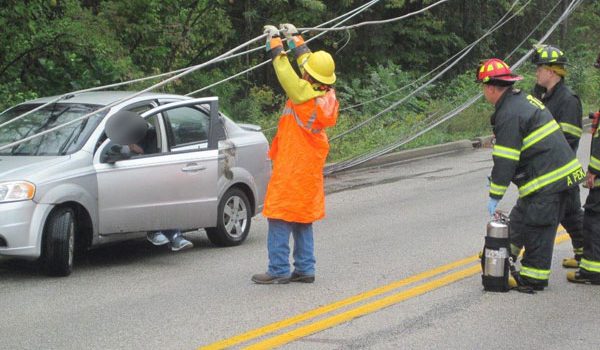
Working Safely Around Downed Electrical Wires
Electrical hazards multiply for workers involved in cleanup and recovery efforts following major disasters and weather emergencies. Life-threatening danger exists around downed and low-hanging electrical wires which can still be energized following a storm.
Safety First Always consider all electrical equipment, lines and conductors to be energized. If you notice downed wires or damaged electrical equipment, contact appropriate utility personnel if you can. Circuits do not always turn off when a power line falls into a tree or onto the ground. Reloaders automatically try to reset circuits and restore power when it is interrupted. Even if electric lines are not sparking or humming, fallen electric lines can electrocute you if you touch them or the ground nearby.
Energy Downed wires can energize other nearby objects, such as fences, water pipes, bushes and trees, buildings, and telephone/CATV/ fiber optic cables. Even manhole castings and reinforcement bars (rebar) in pavement can become energized by downed wires. During storms, wind-blown objects such as canopies, aluminum roofs, siding, and sheds can also be energized by downed wires.
The improper connection of portable generators to a building’s electrical system is one way hazardous conditions are created!
is a hazardous condition created when temporary sources of electricity (such as a generator) are connected to the damaged permanent system causing electricity to flow inside and outside a structure through connected lines and equipment. In emergency conditions, portable generators should only be used as standalone sources of power, and (except for properly wired by-pass or isolation connections) not connected to a building’s electrical system.
If a generator is connected to a building’s electrical system, it must be done with a properly installed main breaker bypass to prevent electricity from flowing out of the building and into downed power lines. Some other sources of include:
• Circuit ties/switch points
• Lightning
• Downstream events Always ensure that proper lockout/tagout procedures are followed to avoid connecting two electrical sources to the same circuit.
Rules to Live By
• Do not assume that a downed power line is safe simply because it is on the ground or it is not sparking.
• Do not assume that any wire is a harmless telephone, television, or fiber-optic cable, and does not carry lethal current.
• Treat everything electrical as energized until tested and proven to be de-energized.
• Never go near a downed or fallen electric power line.
• Electricity can spread outward through the ground in a circular shape from the point of contact. As you move away from the center, large differences in voltages can be created.
• Never drive over downed power lines. Assume that they are energized.
• If contact is made with an energized power line while you are in a vehicle, remain calm and do not get out unless the vehicle is on fire. If possible, call for help.
• If you must exit any equipment because of fire or other safety reasons, try to jump completely clear, making sure that you do not touch the equipment and the ground at the same time. Land with both feet together and shuffle away in small steps to minimize the path of electric current and avoid electrical shock. Be careful to maintain your balance
